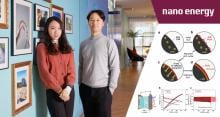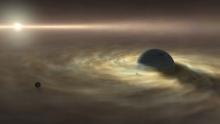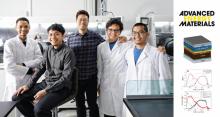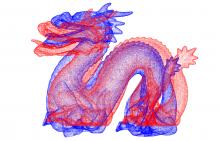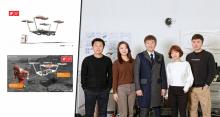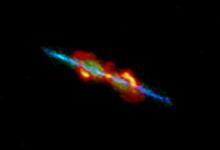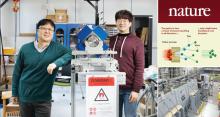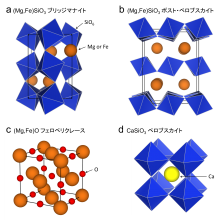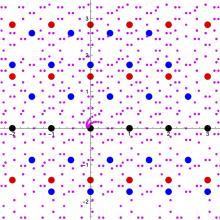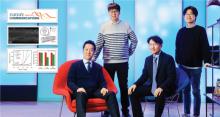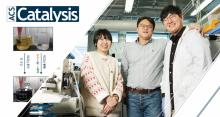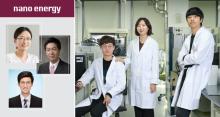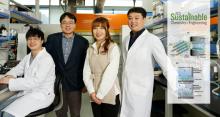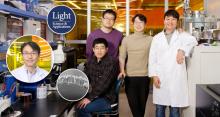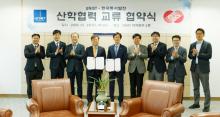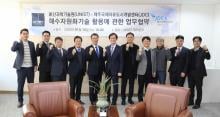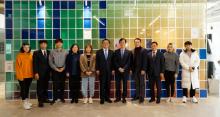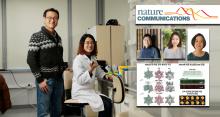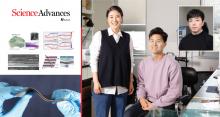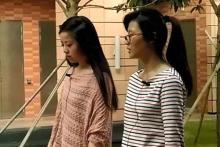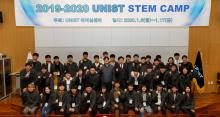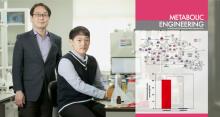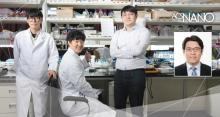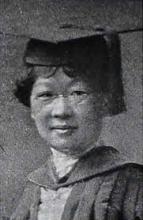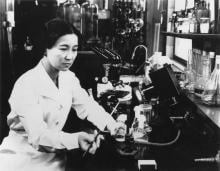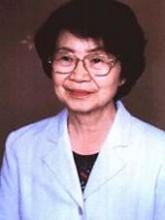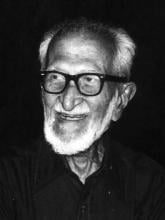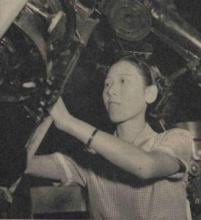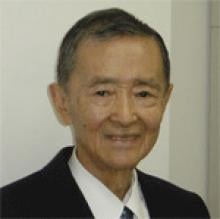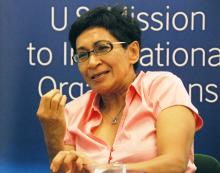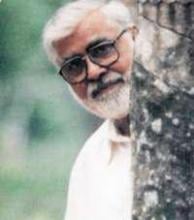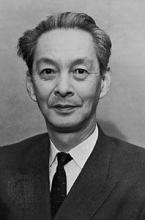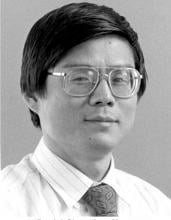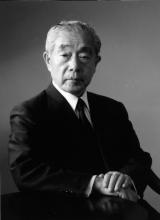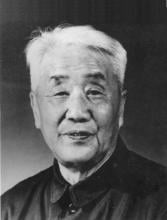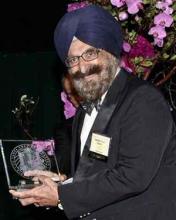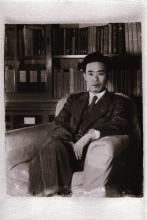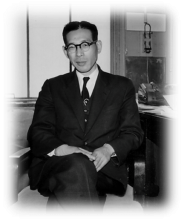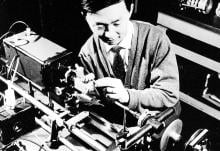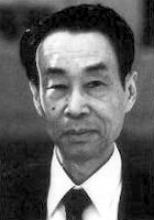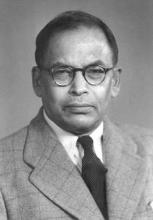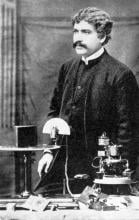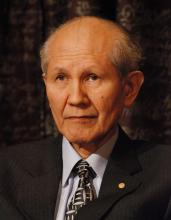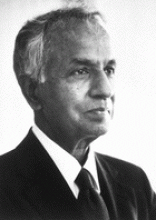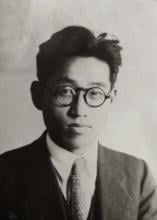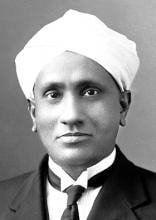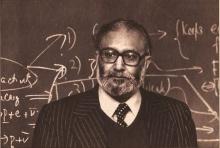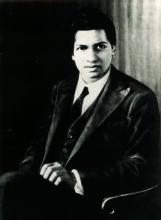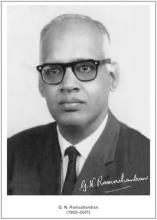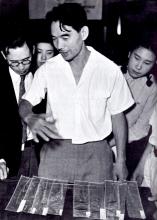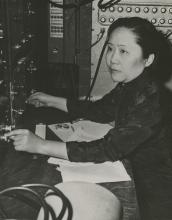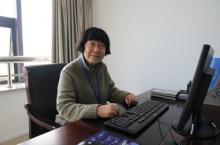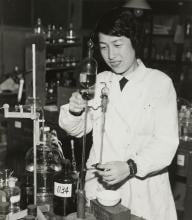Science
News
10 Mar 2020
Two faculty members from South Korea's Ulsan National Institute of Science and Technology (UNIST) have been honored with meritorious citations and awards for their outstanding research performance.
09 Mar 2020
Researchers found that dust encircling a young gas giant can create a “safety zone,” which keeps a large moon from falling into the planet as the system evolves.
09 Mar 2020
A recent study, affiliated with South Korea's Ulsan National Institute of Science and Technology (UNIST) has developed high‐efficiency, solution‐processed, hybrid series, tandem photovoltaic devices featuring CQDs and organic bulk heterojunction (BHJ) photoactive materials.
06 Mar 2020
Point set registration problems, i.e. finding corresponding points between shapes represented as point sets, are important in a variety of fields, so algorithms have been developed. Here, a new algorithm is discovered for point set registration problems. This algorithm is demonstrated to solve several typical problems remarkably faster than conventional methods and with the highest accuracy. This novel algorithm will be beneficial to a wide variety of technologies including computer graphics, computer vision, authentication etc.
06 Mar 2020
The International Network for Government Science Advice (INGSA) Asia is conducting a survey on “Science in Policy Making”.
06 Mar 2020
A design team, affiliated with South Korea's Ulsan National Institute of Science and Technology (UNIST) has been honored at the international design competition, iF Design Awards 2020.
05 Mar 2020
An international team of astronomers using ALMA has captured the very moment when an old star first starts to alter its environment.
05 Mar 2020
An international team of researchers, affiliated with South Korea's Ulsan National Institute of Science and Technology (UNIST) has for the first time succeeded in demonstrating the ionization cooling of muons.
02 Mar 2020
The theoretical mineral physics group of Ehime University led by Dr. Taku Tsuchiya has developed high-precision computational techniques for studying Earth and planetary materials based on quantum mechanical theory and reported several outcomes for Earth’s lower mantle minerals and high-pressure hydrous phases. Their insights and discoveries clarify the mineralogy of Earth’s lower mantle and new mineral phases stabilized at the deep mantle.
02 Mar 2020
A physicist and mathematician have found a string theory link in a class of complex numbers.
02 Mar 2020
A recent study, affiliated with South Korea's Ulsan National Institute of Science and Technology (UNIST) has unveiled a novel catalyst (Pt1/CNT) for electrochemical chlorine generation.
02 Mar 2020
A recent study, affiliated with South Korea's Ulsan National Institute of Science and Technology (UNIST) has presented a new biofuel system that uses lignin found in biomass for the production of hydrogen.
29 Feb 2020
A recent study, affiliated with South Korea's Ulsan National Institute of Science and Technology (UNIST) has unveiled an ion concentrate electrolyte using a solvent containing fluorine atoms.
28 Feb 2020
A recent study, affiliated with South Korea's Ulsan National Institute of Science and Technology (UNIST) has presenter in-depth study of the interaction mechanism between the lignin nanofilms.
28 Feb 2020
A recent study, affiliated with South Korea's Ulsan National Institute of Science and Technology (UNIST) has introduced a flexible and transparent solar cell, using silicon microwire composites.
27 Feb 2020
South Korea's Ulsan National Institute of Science and Technology (UNIST) has signed MoU with the Korea East West Power Co., Ltd. (EWP) to cultivate professional personnel in renewable energy.
26 Feb 2020
South Korea's Ulsan National Institute of Science and Technology (UNIST) has signed a Memorandum of Understanding (MoU) with the Jeju Free International City Development Center (JDC) for research collaboration.
26 Feb 2020
A recent study, affiliated with South Korea's Ulsan National Institute of Science and Technology (UNIST) has succeeded for the first time in making the crystalline silicon solar cell transparent with dark and muddy colors.
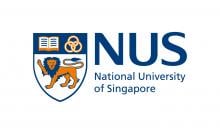
25 Feb 2020
An international team of researchers has found that there is cause for optimism for now as the global loss rate of mangrove forests is now less alarming than previously suggested.
25 Feb 2020
Mayor Cheol-ho Song (Ulsan, South Korea) visited the startup facilities of Ulsan National Institute of Science and Technology (UNIST) on January 4, 2020.
24 Feb 2020
A recent study, affiliated with South Korea's Ulsan National Institute of Science and Technology (UNIST) has unveiled the structure and mechanism of proteins that are highly overexpressed in various cancers and associated with poor patient prognoses.
23 Feb 2020
South Korea's Ulsan National Institute of Science and Technology (UNIST), in collaboration with POSTECH, have developed a new biomimetic ‘moving’ surface, inspired from the biomachanics of the pectoral fins of the Batoidea.
23 Feb 2020
Walking is one of our most natural, daily actions. Now, a new study led by a Tohoku University researcher suggests that walkers use step synchronization as a form of non-verbal social communication. The results lend credence to the effects of psychological traits on movement interaction between humans.
22 Feb 2020
2 Gold, 3 Silver, 5 Bronze, and 2 Participation Awards have been bestowed upon South Korea's Ulsan National Institute of Science and Technology (UNIST) at this year's Samsung Humantech Paper Awards.
21 Feb 2020
South Korea's Ulsan National Institute of Science and Technology (UNIST) has held an enterance ceremony for the 2019-2020 UNIST STEM CAMP on January 6, 2020.
21 Feb 2020
South Korea's Ulsan National Institute of Science and Technology (UNIST), in collaboration with NASA in the United States, have successfully analyzed the main patterns of atmospheric circulation affecting the Arctic sea ice.
21 Feb 2020
South Korea's Ulsan National Institute of Science and Technology (UNIST) has decided to postpone the start of the Spring 2020 Semester due to 2019-nCoV outbreak.
20 Feb 2020
A recent study, affiliated with South Korea's Ulsan National Institute of Science and Technology (UNIST) has unveiled the metabolic pathways of M. alcaliphilum 20Z grown on methane and methanol.
20 Feb 2020
A recent study, affiliated with South Korea's Ulsan National Institute of Science and Technology (UNIST) has presented a dynamic transport control mechanism for colloidal particles by developing a micro-/nanofluidic DP platform (MNDP).
Giants in history
Chinese biochemist Chi Che Wang (1894 - 1979), one of the first Chinese women to study abroad, advanced to prominent research positions at American institutions including the University of Chicago and the Northwestern University Medical School.
Ruby Sakae Hirose (1904 – 1960) was a Japanese-American scientist whose research contributed significantly to our understanding of blood clotting, allergies and cancer.
Chinese electron microscopy specialist Li Fanghua (6 January 1932 – 24 January 2020) facilitated the high-resolution imaging of crystal structures by eliminating interference.
Sálim Moizuddin Abdul Ali (12 November 1896 – 20 June 1987), commonly referred to as the Birdman of India, was the first person to conduct systematic surveys of birds from across India.
Haisako Koyama (1916 – 1997) was a Japanese solar observer whose dedication to recording sunspots – cooler parts of the sun’s surface that appear dark – produced a sunspot record of historic importance.
Michiaki Takahashi (17 February 1928 – 16 December 2013) was a Japanese virologist who developed the first chickenpox vaccine.
Toshiko Yuasa (11 December 1909 – 1 February 1980) was the first Japanese female physicist whose research on radioactivity shed light on beta decay – the process in which an atom emits a beta particle (electron) and turns into a different element.
Angelita Castro Kelly (1942-2015) was the first female Mission Operations Manager (MOM) of NASA. She spearheaded and supervised the Earth Observing System missions during its developmental stage.
Malaysia’s first astrophysicist, Mazlan binti Othman (born 11 December 1951) was instrumental in launching the country’s first microsatellite, and in sending Malaysia’s first astronaut, Sheikh Muszaphar Shukor, into space.
Known as Mr. Natural Rubber, chemist and researcher B. C. Shekhar (17 November 1929 – 6 September 2006) introduced a number of technical innovations that helped put Malaysia’s natural rubber industry on the world map.
Shinichiro Tomonaga (31 March 1906 – 8 July 1979), together with Richard Feynman and Julian Schwinger, was awarded the Nobel Prize in Physics in 1965, for their contributions to advance the field of quantum electrodynamics. Tomonaga was also a strong proponent of peace, who actively campaigned against the proliferation of nuclear weapons and promoted the peaceful use of nuclear energy.
South Korean theoretical physicist Daniel Chonghan Hong (3 March 1956 – 6 July 2002) achieved fame in the public sphere through his research into the physics of popcorn.
Japanese chemist Kenichi Fukui (4 October 1918 – 9 January 1998) was the first Asian scientist to be awarded the Nobel Prize in Chemistry. Together with Roald Hoffman, he received this honour in 1981 for his independent research into the mechanisms of chemical reactions.
Chinese palaeontologist, archaeologist and anthropologist Pei Wenzhong (January 19, 1904 – September 18, 1982) is regarded as a founder of Chinese anthropology.
Physicist Narinder Singh Kapany (31 October 1926 – 4 December 2020) pioneered the use of optical fibres to transmit images, and founded several optical technology companies. Born in Punjab, India, he worked at a local optical instruments factory before moving to London for PhD studies at Imperial College. There, he devised a flexible fibrescope to convey images along bundles of glass fibres.
Japanese physicist Ukichiro Nakaya (1900-1962) made the world’s first artificial snowflakes. He started his research on snow crystals in the early 1930s at Hokkaido University, where there is an unlimited supply of natural snow in winter. By taking over 3,000 photographs, he established a classification of natural snow crystals and described their relationship with weather conditions.
The field of solid-state ionics originated in Europe, but Takehiko Takahashi of Nagoya University in Japan was the first to coin the term ‘solid ionics’ in 1967. ‘Solid-state ionics’ first appeared in 1971 in another of his papers, and was likely a play on ‘solid-state electronics’, another rapidly growing field at the time.
Charles Kuen Kao (Nov. 4, 1933 to Sept. 23, 2018) was an engineer who is regarded as the father of fibre optics. His work in the 1960s on long distance signal transmission using very pure glass fibres revolutionized telecommunications, enabling innovations such as the Internet.
Chika Kuroda (24 March 1884 – 8 November 1968) was a Japanese chemist whose research focussed on the structures of natural pigments.
Motoo Kimura (13 November 1924 – 13 November 1994) was a Japanese theoretical population geneticist who is best remembered for developing the neutral theory of molecular evolution.
Meghnad Saha (6 October 1893 – 16 February 1956) was an Indian astrophysicist best known for formulating the Saha ionization equation which describes the chemical and physical properties of stars.
Sir Jagadish Chandra Bose (30 November 1858 – 23 November 1937) was a scientist and inventor who contributed to a wide range of scientific fields such as physics, botany and biology.
Osamu Shimomura (27 August 1928 – 19 October 2018) was a Japanese organic chemist and marine biologist who dedicated his career to understanding how organisms emitted light.
Subrahmanyan Chandrasekhar (19 October 1910 – 21 August 1995) was an Indian astrophysicist who studied the structure and evolution of stars.
Joo-myung Seok (November 13, 1908 – October 6, 1950) was a Korean butterfly entomologist who made important contributions to the taxonomy of the native butterfly species in Korea.
Mathematician Maryam Mirzakhani (12 May 1977 – 14 July 2017) was the first and only woman and Iranian to date to win the Fields Medal in 2014 for her work on curved surfaces.
Sir Chandrasekhara Venkata Raman (7 November 1888 – 21 November 1970) was an Indian physicist who performed ground-breaking research in the field of light-scattering.
Mohammad Abdus Salam (29 January 1926 – 21 November 1996) was a theoretical physicist and the first Pakistani to receive a Nobel Prize in science.
Srinivasa Ramanujan (22 December 1887 – 26 April 1920) was a math prodigy and widely considered one of India’s greatest mathematicians. Despite having almost no formal training in mathematics, he made substantial contributions to mathematical analysis, number theory, infinite series and continued fractions.
Gopalasamudram Narayanan Ramachandran (8 October 1922 – 7 April 2001) is best known for developing the Ramachandran plot to understand the structure of short chains of amino acids, known as peptides.
Hitoshi Kihara (1893 – 1986) was one of the most famous Japanese geneticists of the 20th century. One of his most significant contributions was identifying sex chromosomes (X and Y) in flowering plants.
Chien-Shiung Wu (31 May 1912 – 16 February 1997) was an experimental physicist who made several important contributions to nuclear physics. Wu worked on the Manhattan Project – a top-secret program for the production of nuclear weapons during World War II and helped to develop a process for separating uranium into U235 and U238.
Meemann Chang (born 17 April 1936) is a Chinese palaeontologist who studied the fossils of ancient fish to understand the evolution of life. By examining fossils, she uncovered new insights on how vertebrates, animals with a backbone, migrated from the sea and became adapted to live on land.
Bibha Chowdhuri (1913 – 2 June 1991) was an Indian physicist who researched on particle physics and cosmic rays. In 1936, she was the only female to complete a M.Sc. degree at the University of Calcutta.
Lin Lanying (7 February 1918 – 4 March 2003) was a Chinese material engineer remembered for her contributions to the field of semiconductor and aerospace materials. Lanying was born into a family who did not believe in educating girls and she was not allowed to go to school.
Japanese geochemist Katsuko Saruhashi developed the first method and tools for measuring carbon dioxide in seawater


